A spectacular mushroom with varied colours, mainly between green, yellow and blue with a shiny, slimy cap and stem. As with most waxcaps this mushroom should be left alone to grow and be appreciated as it is not common and is rather inedible due to its sliminess.
Home / Mushroom Guide /
Parrot Waxcap
Parrot Waxcap
| Mushroom Type | |
| Common Names |
Parrot Waxcap (EN), Cap Cwyr y Parot (CY), Wilgotniczka Papuzia (PL), Zöldes Nedűgomba (HU) |
| Scientific Name |
Hygrocybe / Gliophorus psittacinus |
| Synonyms |
Hygrocybe psittacina, Hygrophorus psittacinus |
| Season Start |
Jul |
| Season End |
Dec |
| Average Mushroom height (CM) |
2-6 |
| Average Cap width (CM) |
1-6 |
Please note that each and every mushroom you come across may vary in appearance to these photos.
Cap
1-6 cm. Varying colours between green, yellow, blue, grey and brown although usually starting deep bottle green. The cap is slimy and starts convex but will flatten out retaining an obvious umbo.
Gills
Mainly off white to yellow with some green colouring, thick and widely spaced. The gills are broadly attached to the stem (adnate) to being notched before joining the stem (sinuate). Transverse ‘gills’ running between the main gills can often be seen.
Stem
2-6 cm long, 2-8 mm diameter. Somewhere between green and yellow, usually more dark green/blue towards the apex and very slimy.
Habitat
In unimproved grassland like fields and pastures or graveyards, can occasionally occur in open, damp woodland.
Possible Confusion
A very distinctive looking mushroom.
Spore Print
White. Ellipsoid.
Frequency
Fairly common for a waxcap.
Other Facts
Waxcaps don’t like to be disturbed or sprayed so will be found where fields and woodland have been left alone.
It is now thought that waxcaps grow in association with mosses, before it was thought that waxcaps were saprophytic living on decaying organic matter.


 (26 votes, average: 3.96 out of 5)
(26 votes, average: 3.96 out of 5)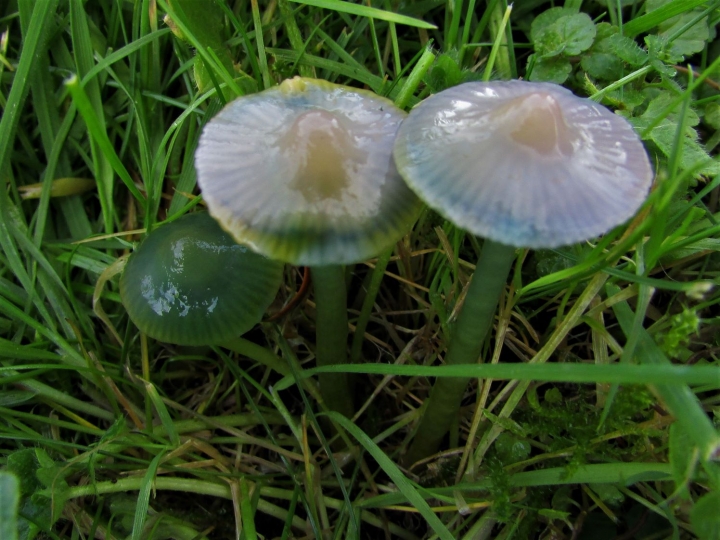
















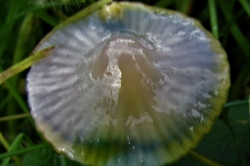
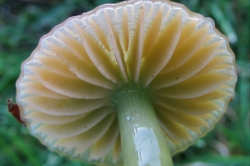
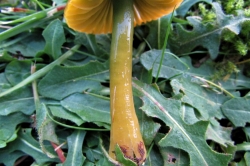
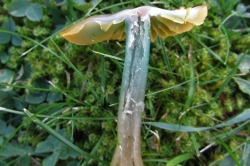
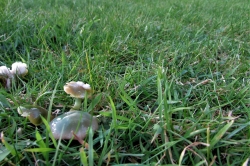






Leave a Reply